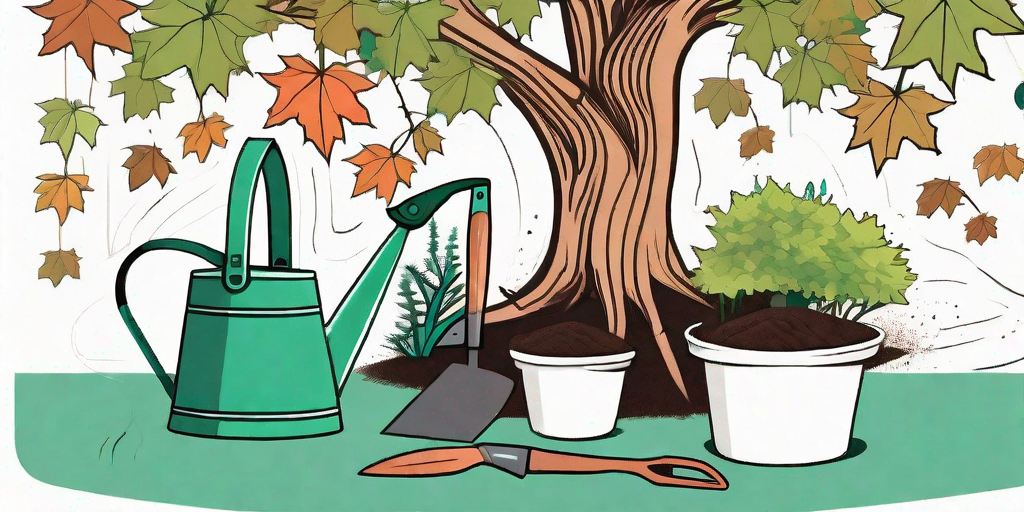
Maple trees, with their fiery autumn foliage and sweet sap, are a beloved symbol of nature's beauty. But did you know that you can grow your own maple tree in a pot? Yes, you read that right. You don't need a sprawling backyard or a green thumb the size of a giant sequoia. All you need is a pot, a little patience, and a sense of humor. So let's dive into the world of potted maple trees and discover how to turn that tiny sapling into a leafy masterpiece.
Choosing Your Maple Tree
First things first, let's talk about the star of the show: the maple tree. There are over 100 species of maple trees, each with its own unique characteristics. So, choosing the right one for your pot is like choosing the right pet. You need to consider its needs, its personality, and whether it can tolerate your questionable singing in the shower.
Some maple trees, like the Japanese maple, are perfect for pot growing. They have a slow growth rate and a compact size, making them the bonsai of the maple world. Other species, like the sugar maple, might be a bit too ambitious for a pot. Unless you're planning to start your own maple syrup business, it's best to stick with the smaller species.
The Japanese Maple
The Japanese maple is the darling of the potted maple world. It's small, it's beautiful, and it's as hardy as a samurai. This tree can grow up to 20 feet tall, but in a pot, it usually stays around 10 feet. Its leaves are a stunning red color, making it a showstopper in any garden or balcony.
There are several varieties of Japanese maples, each with its own unique leaf shape and color. Some have leaves that are as finely cut as lace, while others have leaves that are as bold and broad as a samurai's sword. So, whether you prefer the delicate or the dramatic, there's a Japanese maple for you.
Preparing Your Pot
Now that you've chosen your maple tree, it's time to prepare its new home. The pot you choose can make or break your maple tree's growth, so choose wisely. It should be large enough to accommodate your tree's growth, but not so large that it feels like it's living in an echo chamber.
The pot should also have good drainage. Maple trees don't like wet feet, and sitting in water can lead to root rot. So, make sure your pot has at least one hole at the bottom. If it doesn't, you can create your own using a drill. Just make sure to wear safety goggles. You don't want to explain to the ER doctor how you got a piece of pottery in your eye.
Choosing the Right Soil
Maple trees are not picky eaters, but they do prefer a well-draining soil. A mix of potting soil, compost, and coarse sand is a good choice. You can also add a bit of slow-release fertilizer to give your tree a nutritional boost. Just don't go overboard with the fertilizer. Too much can burn the roots and lead to a very unhappy tree.
When filling the pot, leave a space of about 2 inches from the top. This will prevent the soil from spilling over when you water your tree. It will also give you a place to stash your secret chocolate stash. Just kidding. Or am I?
Planting and Caring for Your Maple Tree
Now comes the fun part: planting your maple tree. Dig a hole in the soil that's about twice the size of the root ball. Place the tree in the hole, making sure that the top of the root ball is level with the soil surface. Then, fill in the hole with soil, firming it gently around the roots.
After planting, give your tree a good drink of water. Then, place it in a location that gets partial to full sun. Remember, maple trees are like Goldilocks. They don't like too much sun or too little sun. They like it just right.
Watering and Fertilizing
Watering and fertilizing your maple tree is a balancing act. Too much water can lead to root rot, while too little can lead to a thirsty tree. A good rule of thumb is to water when the top inch of soil feels dry. As for fertilizing, a slow-release fertilizer applied in the spring should do the trick.
Remember, your maple tree is not a cactus. It needs regular watering and feeding to thrive. So, don't neglect it or you might find yourself with a very sad, very brown tree.
FAQs
Can all maple trees be grown in pots?
No, not all maple trees are suitable for pot growing. Some species, like the sugar maple, can grow up to 100 feet tall, making them a bit too big for a pot. Stick with smaller species, like the Japanese maple, for best results.
How often should I water my potted maple tree?
Water your maple tree when the top inch of soil feels dry. This can be anywhere from once a week to once a month, depending on the weather and the size of your pot.
Can I grow a maple tree indoors?
Yes, you can grow a maple tree indoors, but it might not be as happy as it would be outdoors. Maple trees need plenty of sunlight and fresh air to thrive. If you do decide to grow one indoors, make sure it gets at least 6 hours of sunlight a day.
Conclusion
Growing a maple tree in a pot might seem like a daunting task, but with the right tree, the right pot, and a bit of TLC, you can create a leafy masterpiece. So, go ahead and give it a try. Who knows? You might just find yourself with a new green thumb and a newfound appreciation for the beauty of nature.















